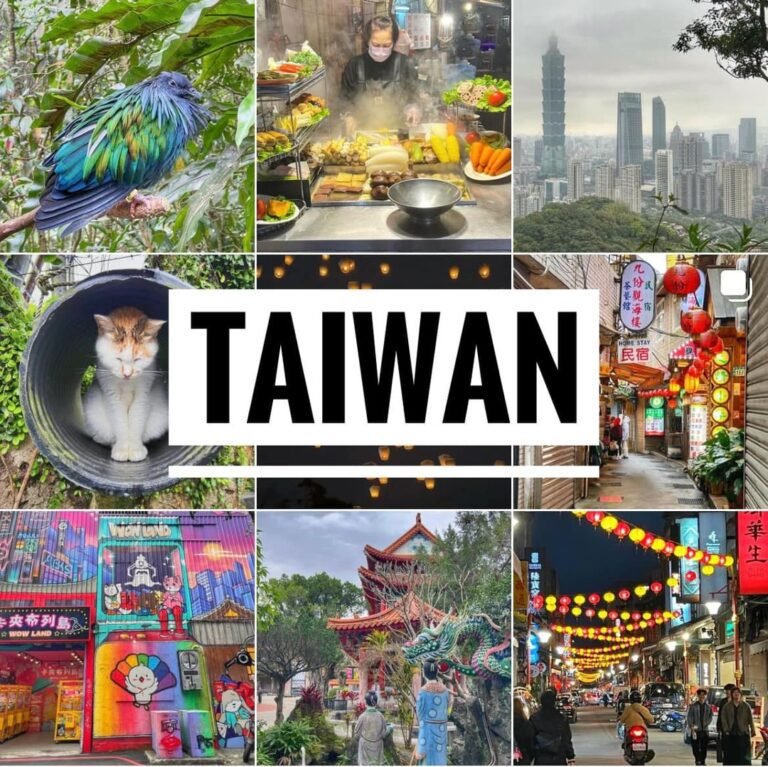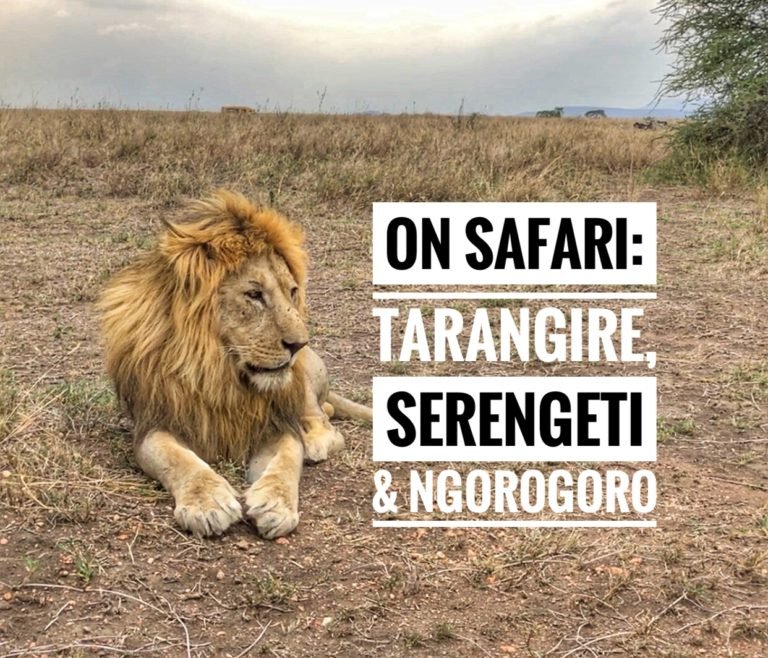
One of the world’s oldest cities, 1500-year old Tbilisi is the pulsating heart of the Caucus Mountains. It breathes a history which intertwines the Silk Road, ancient Christianity, and sulphur baths and combines with a modern, thriving city sometimes even said to be “the New Berlin.” It was a great city to stroll in…and we soaked it in in more ways than one!
The history of Tbilisi spans more than 1500 years. No surprise, many myths exist about its formation. One of the most popular describes how King Gorgasali was hunting in the woods along the banks of the Mtkvari River and he wounded a pheasant which dropped into one of the many hot springs in the area. The water miraculously cured the bird who flew off as if nothing had happened. The king, amazed by the healing powers of the water, decided to move the capital from Mtskheta to this newfound land, and called it Tbilisi, which translates to “warm place.”

This clock looks like it has been pulled out of the pages of a fairy tale and plopped down in Tbilisi. It is quite modern however, and was only built in 2010 by artist and director, Reno Gabriadze. At the top of every hour, an angel comes out to ring her bell with a hammer. (Hammer?) It is part of the entrance to the adjoining puppet theatre, which is well-regarded internationally with high-caliber marionette performances. Unfortunately it was sold out during our time in Tbilisi or we would have checked out these famous puppets!

Gorgasali Square is a bustling crossroads with lines of traffic honking and speeding about. Things were not much different back in the 17th & 18th centuries when this square was the site of a crowded bazaar attracting traders from Russia, the Middle East and from the Silk Road. Camel trains brought spices, carpets and silks while Georgians sold weapons, wine, metalwork and woolen goods.

Just a simple, idyllic street scene we came across wandering the alleyways of Tbilisi.

One of the few churches which was not completely destroyed through Tbilisi’s numerous sackings, this is the longest surviving church in Tbilisi built in the 6th Century. Like many of the churches in Tbilisi, it was closed down during the Soviet-era and was converted to a museum of handicrafts. However, following independence, it resumed its central role in the religious life of Georgia. In the background, you can see the Presidential Palace watching over on the hill.

The interior of the Sioni Cathedral of the Dormition. Every square inch of the interior is covered in frescoes! This church was completed in 7th century but it was destroyed by Arabs and later rebuilt in the late 1600’s.

These walls from the 12th & 13th centuries were unearthed in the 1970s when existing buildings were demolished and there was redevelopment to this part of the city. The city built bridges to protect all this archaeology and today the road and pavement passes safely overhead. The remains include several towers and you can see multiple layers showing they had repeatedly been destroyed by invaders and rebuilt time and time again with different materials.

Tbilisi’s ancient city walls can still be seen surrounding the old town area, often with “newer” buildings built on top of them. It’s an interesting layering effect.


This hidden bakery is down a indiscriminate set of stairs and is churning with fluffy, delicious-smelling activity. Hot Georgian bread and pastries right from the oven. And yes, that round thing in the middle is an oven! Once the baker kneads the dough, he slaps it onto the sides to bake. It’s truly heavenly and unlike bread we’ve had from anywhere else.

Passing by this restaurant, it made us pause and chuckle slightly because we’d never seen “Caucasian” Cuisine before. Yes, the term we now refer to as “white people” originally came from the Caucus Mountains, the border of Northern Georgia.

Freedom Square was named so when Georgia declared independence in 1918 from Russia although during most of the Soviet Union days it was referred to as Lenin Square. The column features a gilded statue of St. George on horseback and replaced a much-loathed Lenin statue that stood for years on the same spot.

Tbilisi has long been a melting pot and this extends to religion as well. While Georgia is overwhelmingly Orthodox Christian, there is a remarkable tolerance of other faiths for centuries. Jumah Mosque is on the same road as a church, and a synagogue. Muslims currently constitute 10% of the Georgian population. This mosque, like many others in Tbilisi, has been destroyed and rebuilt three times. We were enamored by the beautiful blue colors.

Many of Tbilisi’s buildings are embraced in the most characteristic balconies. In the background is the unique octagonal minaret with a Georgian balcony from the Jumah Mosque.

Grabbing lunch at adorable Leila cafe and restaurant, with one of the most elaborate ceilings we’ve ever seen!

St. Trinity (Samebo) Cathedral is the primary cathedral in Tbilisi for the Georgian orthodox religion. It was only built in 2004 to commemorate 1500 years of the Georgian Orthodox Church and 2000 years since the birth of Christ. It is one of the largest religious buildings in the world at 5000 square meters and is visible from far and wide perched high on the hill. The deepest foundations of the structure include old materials from Mount Sion and the Jordan River and soil from Jerusalem. It’s just one part of a sprawling complex that includes a theology school, free-standing belfry and even a hotel. Current opinions seem divided on the grandeur of this building.

Dancing for Georgian joy… and maybe some food!

At one of the two Armenian churches in Tbilisi, we were lucky to get to see some dancers perform.

Kitties were everywhere…absolutely everywhere in Tbilisi. This one decided to take a nap on Greg’s backpack the moment we sat down on a bench for a break.

Georgian bread is no joke. Fluffy, humongous and begging to be eaten:) Oh and this tiny portion cost .80 Lari ($.32). Great! That means lots of extra cash for a Chimney Stack ice cream treat!!



A view of the unique domed sulfur baths.

The entire area of sulphur baths is called Abanotubiani. There are currently about 5 bathhouses to choose from and are all underground. The only thing you can see from above are these beehive-like domes.

People have been soaking in the sulphuric baths of Tbilisi since the beginning of its existence as Georgia’s capital in 5th Century. It was perfectly situated as an R&R spot as one of the final trading posts on the never-ending Silk Road. We chose to go to the Chreli Abano, with the striking Persian-style facade.



The bathhouse we decided on had only private soaking pools, so rooms are just for the two of us. It was 40 Lari ($16) for the hour and featured our own soaking pool, cold shower, and relaxation bed. You could also splurge and add on additional pools, saunas, bars, and more.

Our guidebook “Capitals of the Caucuses” (which we highly recommend if you’re headed to this part of the world) proclaimed that this gorge (Leghvtakhevi, means ‘gorge of figs’) tucked back behind the sulfur baths was a “secret,” but like Georgia itself, we think the secret is out as it was flooded with people. There is a dramatic and unexpected waterfall at the end.

One of Tbilisi’s most prominent landmarks is the 17-centuries old Narikala Fortress high above the city. Today, it’s practically a jungle-gym of climbing and exploring, as you can see by the “stairs” which would make any American lawyer anticipate a hefty lawsuit. The name means “impregnable” fortress and its strategic importance is evident when you look at the city down below. The Persians laid the initial foundations for the castle in 4th Century it became enhanced when Tbilisi became the capital in the next century. The Mongolians, Turks, & Persians all left their mark trying to break down the structure’s defenses.

There are several examples of this ancient city trying to be modern. This 150-meter long eyesore (in our opinion) pedestrian bridge was completed in 2010. It was commissioned to connect the old town on the west bank and new quarters on the east. The architects build the entire bridge in Italy and transported them in pieces across Europe in two hundred trucks. At night, thousands of embedded LED lights within the structure come to life. It communicates in Morse code the chemical elements found in the human body. The intention is to celebrate life and peace between people by telling the story of what makes up each one of us. And, to the right… we don’t know what the hell this is! It looks like it was taken from Futurama!

Street art is light-hearted and entertaining in Tbilisi. Pictured here is the dapper light pole, and the Toastmaster, or Tamada statue. This person is historically someone who plays an essential role in Georgian feasts, weddings and other special occasions. Above all, they need to be eloquent, organize entertainment well and control the pace of toasting according to level of inebriation. Heard of the Toastmasters group? Yes, there’s a reason it’s called that!



Kartlis Deda, or the Mother of Georgia statue. This 20-meter high pretty lady is designed to represent the Georgian character. She holds a sword in one hand which shows off the determined defense of the homeland over the centuries, and a bowl of wine in another, displaying their welcoming nature. Um, yes. No doubt.

The Meidan Baazar, on the main Gorgasali Square, has been a historical underground market for centuries. This bazaar historically traded with caravans from the east on the Silk Road. Today you can still load your bag with authentic Georgian Souvenirs like wine, churchkela, and even national costumes with furry hats to take home. According to Jean Chardin, “In no part of the world can you see so many foreigners as here…here you will meet Armenians, Greeks, Jews, Persians, Indians, Tatars, Moskovites & Europeans.”
Day Trip to Gori

While we were in Tbilisi, we decided to pay a visit to the birthplace and hometown of one the most notorious world leaders of the 20th Century… Joseph Stalin. The Stalin Museum is in Gori, a small town less than an hour by marshrutka bus and despite Georgia’s repression during the Soviet Era, the museum remains as a over-the-top shrine to the infamous dictator. It takes you from his boyhood home (onsite), tells of his criminal journey and numerous prison escapes, his joining of the Bolsheviks and then skims over how he went onto be a masterful murderous dictator. The museum was opened in 1957 after his death and everywhere within it shouts Stalinism. Once you enter, you are led up a grand marble staircase to a -UGE statue of the man. In these pictures: 1) a picture of the “real” Stalin, which was taken by an American journalist. It’s one of the few pictures that was not “photoshopped” and show the small pox scars on his chin. 2) the disreputable hat 3) Stalin hugging a child…….hmmm.

The bullet proof luxury train carriage Stain rode in, rumor has it he was afraid of flying, to go to the Yalta conference… it also has an early working model of an air conditioner.

Stalin’s humble mud brick boyhood home from 1878, which he lived in until he was four, in its original site. He and his family lived just in the one room to the left (they did not own the house) while the owner lived behind the door to the right. The home has not been transported here, they built a park and a temple-like roofed structure around it. We were told that Stalin’s father worked out of a basement shop, pictured to the bottom left, as a shoe maker and cobbler.

Stalin’s office furniture from the Kremlin (notice the two phones, one black and one white… we wondered which one meant trouble when it rang), and his fancy all-in-one personal tank sculpture lamp… which included a radio, ash tray, cigarette box, AND clock.

Get your Stalin souvenirs!!

In a world of contrasts… we captured this cute little girl (left) innocently posing with her Barbie in hand at the Stalin statue out in front of the museum… and later our curiosity on Google and Wikipedia into the Stalin offspring today led us to discover Stalin’s (very) alternative and counterculture granddaughter living in — of all places but it kinda makes sense — Portland, Oregon where she runs her own Buddhist/Antique shop.

Back in Tbilisi we checked out this really amazing photo art exhibit cleverly repurposing one of the historic underground tunnels. It featured photos of life struggles and everyday existence around the world.



